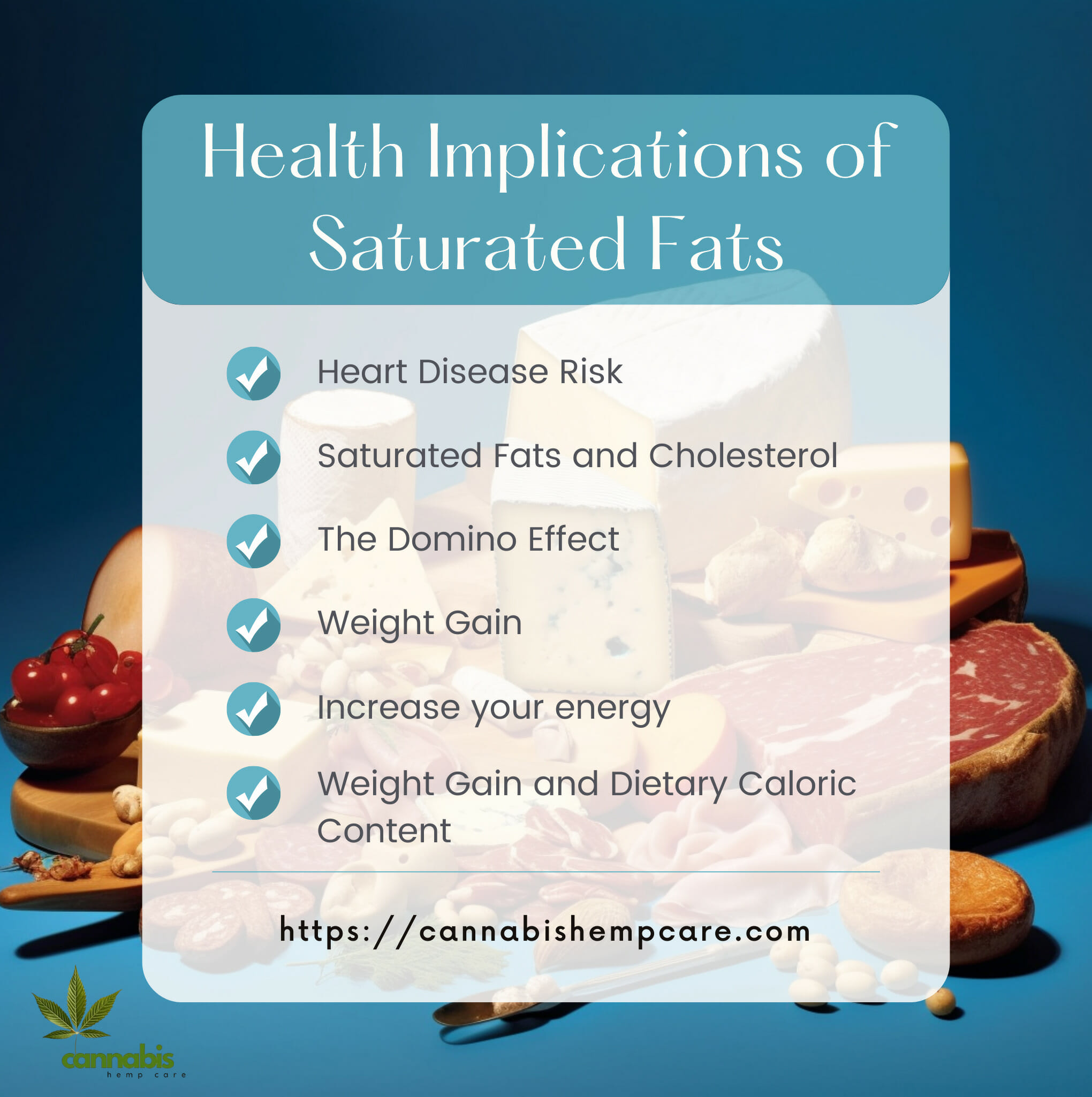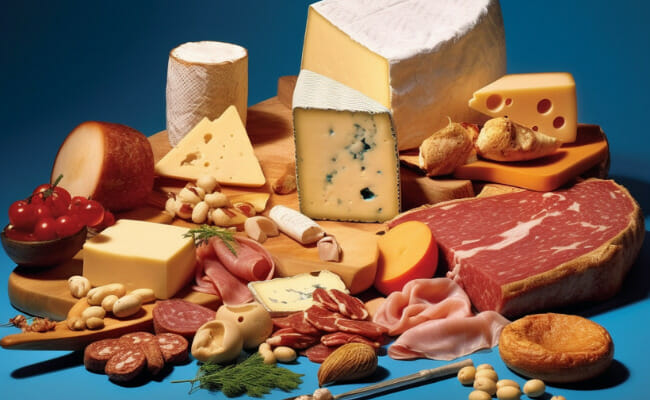Dietary fats, an essential component of our diet, are categorically divided based on their chemical structure and their subsequent effects on health. Among these, saturated fat, a type of dietary fat, has often been at the epicenter of nutritional debates. The discourse surrounding saturated fats is intricate, necessitating a comprehensive exploration.
Understanding Saturated Fats
Saturated fats1 are primarily characterized by their molecular composition. All fats are constituted of carbon, hydrogen, and oxygen molecules. In saturated fats, these molecules are fully ‘saturated’ with hydrogen, meaning there are only single bonds between carbon atoms.
This saturation causes them to remain solid at room temperature. Foods enriched with such fats include cheese, red meat, and palm and coconut oils.
Differentiating Between Dietary Fats
Beyond saturated fats, the diet contains trans fats and unsaturated fats. Trans fats have been universally deemed detrimental, while unsaturated fats, which encompass monounsaturated and polyunsaturated fats, are often categorized as healthier alternatives.
Unlike saturated fats, unsaturated fats contain at least one double bond between carbon molecules, resulting in a liquid consistency at room temperature.
Health Implications of Saturated Fats

Heart Disease Risk
One primary concern associated with saturated fats is their impact on heart health. Consuming excessive amounts can lead to an accumulation of cholesterol in arteries, heightening the Heart disease risk.
Specifically, saturated fats increase LDL (bad) cholesterol levels, which, when elevated, enhances the risk of heart disease and stroke.
- LDL (bad) Cholesterol2:
Think of it as the “lousy” cholesterol. When there’s too much of it, it can stick to the walls of your arteries, making them narrow. - HDL (good) Cholesterol:
This is the “hero” cholesterol. It helps remove the LDL from your bloodstream.
Saturated Fats and Cholesterol
When you eat too much-saturated fat, your body overproduces LDL. This excess LDL can lead to blockages in your arteries, making it harder for blood to flow.
The Domino Effect
With narrowed or blocked arteries, the heart has to work overtime, and this can result in conditions like heart disease and stroke. Essentially, it’s like a traffic jam in your bloodstream, and it can lead to accidents if not managed.
Weight Gain and Dietary Caloric Content
Saturated fats are often found in high-fat dishes, especially in fried dishes, pizza, and baked goodies. These fats contain 9 calories per gram of fat, which is notably more than the calories found in carbohydrates and protein. An overreliance on high-fat foods, therefore, can escalate caloric intake, precipitating weight gain.
The Calorie Math
All foods give us energy, and we measure this energy in terms of calories. But not all calories are created equal. While proteins and carbohydrates give us 4 calories for every gram we eat, fats give us more than double – 9 calories for each gram!
The Culprits
Some of our favorite comfort foods, like fried dishes, pizzas, and baked goodies, are often loaded with saturated fats. When you eat a slice of pizza or a doughnut, you’re getting more calories from the fats in them than from the carbohydrates or proteins.
Weight Gain
When we consume more calories than our body uses, it stores the extra as fat for future use. But if we keep overeating and not burning off those calories, the storage grows, leading to weight gain.
Beyond Weight
It’s not just about the numbers on the scale. High-fat diets, especially those rich in saturated fats, can lead to other health problems. For instance, excessive weight increases the risk of diabetes, joint issues, and can strain your heart.

Dietary Recommendations for Fat Intake
Considering the potential health problems arising from excessive fat intake, guidelines suggest:
- Limiting total fat intake to 25% to 30% of daily caloric consumption.
- For a 2,000-calorie diet, this implies an intake of roughly 500-600 calories from fats.
- Specifically, saturated fats should be confined to less than 10% of daily caloric intake.
Understanding food labels can aid in monitoring fat intake:
- A product offering 5% of the daily value from fats is categorized as low.
- Conversely, 20% is considered high.
Is Saturated Fat Really That Bad?
Now, here’s a twist! While many say eating too much-saturated fat is bad, some believe that the real problem might be junk food with lots of sugar and little nutrition. So, while it’s good to watch how much-saturated fat we eat, we also need to be mindful of junky foods!
The Modern Take on Saturated Fats
Cardiovascular diseases (CVDs) have witnessed a rise even as people steered away from dietary fats. 3Paradoxically, despite reduced saturated fat consumption, the incidence of heart ailments hasn’t notably decreased.
Recent studies argue that ultra-processed foods, rich in simple carbohydrates, could be the major culprits. These processed foods may have played a significant role in augmenting health issues, indicating that the demonization of saturated fats might require reevaluation.

Conclusion
Saturated fats, despite being an indispensable component of our diet, have been associated with certain health risks. Their role in increasing LDL (bad) cholesterol can’t be overlooked. However, the mantra remains in moderation. A well-rounded understanding, coupled with informed dietary choices, can ensure that these fats are consumed judiciously, ensuring optimal health outcomes.
FAQs on Saturated Fats
What’s the difference between saturated and unsaturated fats in terms of structure?
Saturated fats have no double bonds between their carbon atoms and are saturated with hydrogen atoms. Unsaturated fats have at least one double bond, which causes a kink, making them typically liquid at room temperature.
Why is too much saturated fat harmful?
Excessive saturated fat can increase LDL (bad) cholesterol in the blood, heightening the risk of heart disease and stroke. It’s essential to balance your diet with both saturated and unsaturated fats for optimal health.
Do all oils contain unsaturated fats?
Most vegetable oils contain higher amounts of unsaturated fats, but they may also have some saturated fats. It’s essential to read labels and be aware of the type and amount of fat in each oil.
Is it possible to change the structure of unsaturated fats to make them more stable for cooking?
Yes, through a process called hydrogenation, unsaturated fats can be turned into trans fats by adding hydrogen. However, trans fats have been linked to increased heart disease risk and are generally considered unhealthy.
What’s the recommendation for daily saturated fat intake?
It’s suggested that adults get less than 10% of their daily calories from saturated fats. For someone consuming a 2,000-calorie diet, this equates to about 20 grams or fewer per day.
Sources
- Wax, Emily. “Facts about Saturated Fats: MedlinePlus Medical Encyclopedia.” Medlineplus.gov, 2019, medlineplus.gov/ency/patientinstructions/000838.htm. Accessed 8 Sept. 2023. ↩︎
- CDC. “LDL and HDL Cholesterol: “Bad” and “Good” Cholesterol.” Centers for Disease Control and Prevention, 2020, www.cdc.gov/cholesterol/ldl_hdl.htm#:~:text=LDL%20(low%2Ddensity%20lipoprotein). Accessed 8 Sept. 2023. ↩︎
- World Health Organisation. “Cardiovascular Diseases.” World Health Organization, 2022, www.who.int/health-topics/cardiovascular-diseases#tab=tab_1. Accessed 8 Sept. 2023. ↩︎




































